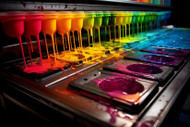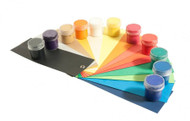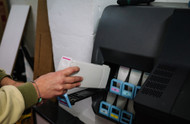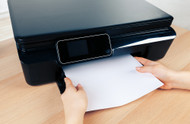22nd Mar 2024
Choosing the Right Printer for Your Needs: A Comprehensive Guide
In today's digital age, printers have become indispensable tools for both personal and professional use. With a plethora of options available in the market, selecting the right printer can be a daunting task. Whether you're a student, a home user, or a business professional, understanding your printing needs is crucial in making an informed decision.
1. Assess Your Printing Needs
Before diving into the sea of printers, take stock of your printing requirements. Consider the volume of printing you anticipate, the types of documents you'll be printing, whether you need color or monochrome printing, and any additional features such as scanning or copying capabilities. This initial assessment will serve as a compass in navigating through the myriad of options.
2. Inkjet vs. Laser: Know the Difference
The two primary types of printers available are inkjet and laser printers. Inkjet printers are renowned for their vibrant color output and versatility in handling various media types, making them ideal for photo printing and small-scale printing tasks. On the other hand, laser printers excel in high-volume printing, offering fast and efficient monochrome printing with crisp text output.
3. Consider Total Cost of Ownership
When choosing a printer, it's essential to look beyond the upfront cost and consider the total cost of ownership. Evaluate factors such as the cost of replacement ink or toner cartridges, maintenance expenses, and energy consumption. While a printer may seem affordable initially, recurring costs can significantly impact your budget in the long run.
4. Connectivity Options
In the age of wireless technology, printer connectivity is a crucial consideration. Most modern printers offer a range of connectivity options, including Wi-Fi, Bluetooth, Ethernet, and USB. Assess your connectivity needs based on the devices you'll be printing from, whether it's a laptop, smartphone, or tablet, to ensure seamless printing experiences.
5. Print Speed and Quality
For businesses or individuals with high printing demands, print speed is a decisive factor. Laser printers typically offer faster printing speeds compared to inkjet printers, making them suitable for environments where efficiency is paramount. However, if print quality is your top priority, especially for photos or graphics, investing in a high-quality inkjet printer may be worth considering.
6. Size and Footprint
The physical dimensions of a printer are often overlooked but can be significant, especially for home users or small offices with limited space. Consider the size and footprint of the printer to ensure it fits comfortably in your workspace without causing clutter. Compact all-in-one printers are popular choices for their space-saving designs that integrate printing, scanning, and copying functions.
7. Environmental Considerations
In an era of growing environmental awareness, eco-friendly printing options are gaining traction. Look for printers with energy-saving features such as automatic power-off or sleep modes to reduce energy consumption when not in use. Additionally, consider printers that support duplex (double-sided) printing to minimize paper usage and promote sustainability.
8. Brand Reputation and Support
When investing in a printer, reputation and support are essential factors to consider. Opt for well-established brands with a track record of reliability and quality customer support. Research customer reviews and feedback to gauge the overall satisfaction level with a particular printer model and the brand's responsiveness to technical issues.
"Printing technology has the profound effect of extending the range of experiences beyond what is familiar to us, while simultaneously informing our decision-making process for the better." - Anonymous
In Conclusion:-
Choosing the right printer requires careful consideration of your printing needs, budget constraints, and long-term objectives. By assessing your requirements, understanding the differences between inkjet and laser printers, evaluating total cost of ownership, considering connectivity options, and prioritizing factors such as print speed, quality, size, and environmental impact, you can make an informed decision that aligns with your needs and preferences.
Remember, the perfect printer for one person may not be the best choice for another. Take your time, do your research, and prioritize features that matter most to you. With the right printer by your side, you can enhance your productivity and bring your creative visions to life with ease.












